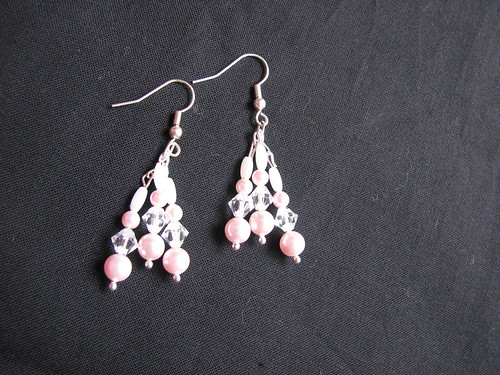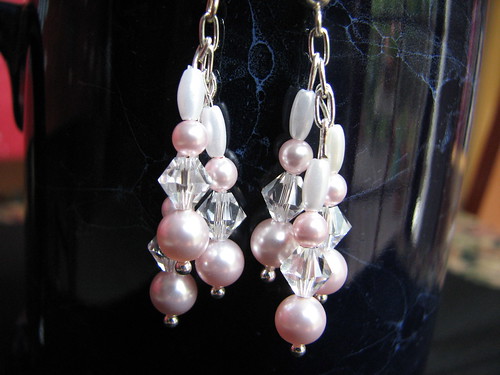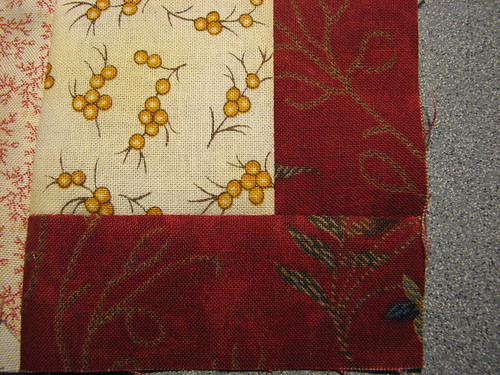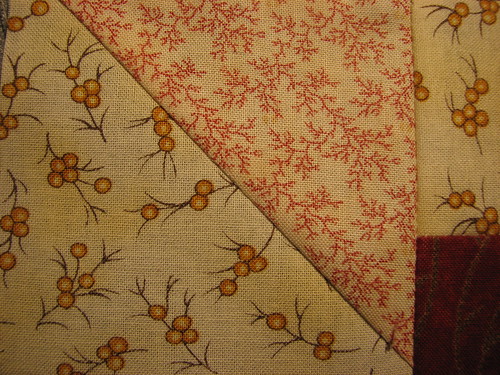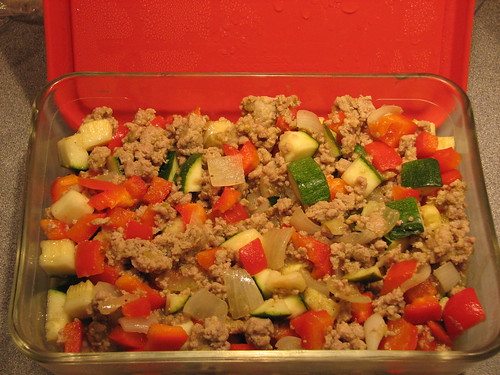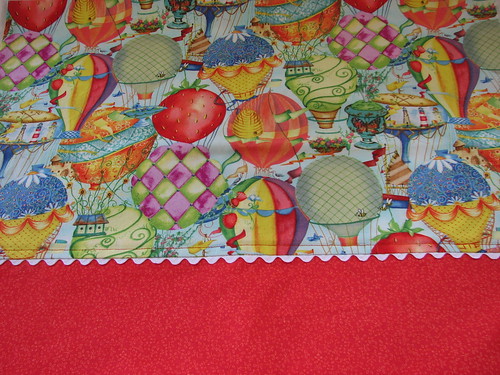The following is from Dr. Mercola's
newsletter.
CNN has published a list of the “truth about twelve “health myths”. Among the myths this article busts? “If you cross your eyes, they’ll stay that way.” “Eat the crust of your bread because it’s full of antioxidants,” and, “to get rid of hiccups, have someone startle you.”
Seriously?
There is massive amount of medical misinformation circulating right now, which is causing an epidemic of chronic disease, unprecedented in human history, and their big concern is whether or not if you cross your eyes, they’ll stay that way?
CNN is beyond clueless.
The primary purpose of their article is entertainment, as it has absolutely nothing to do with the top health myths. With articles such as this one, CNN is part of the problem of perpetuating misinformation and leading you astray with nonsense.
Below I will review 12 REAL health myths that CNN didn’t bother to mention, even though these are the cause of a lot of unnecessary suffering and premature death.
With all the medical misinformation we’re currently exposed to on a daily basis, it’s disappointing to see CNN waste time and space on yet another entertainment-style fluff piece, discussing “health myths” that have no real bearing on your health whatsoever.
Because, believe me, there is no shortage of real health myths that can, and do, have a massive impact on tens of thousands if not millions of people.
Here is my list of the top 12 health myths, none of which CNN bothered to mention:
1: Cardio is One of the Best Types of Exercise
In recent years, researchers have begun to realize that conventional cardio, such as jogging, is not all it’s been cracked up to be, and that you can actually improve your health and increase fat burning by making slight modifications to your cardio routine.
The problem is that traditional cardio only works on the slow twitch muscle fibers in your red muscle, completely ignoring your white muscle super-fast twitch fibers.
“Peak 8” refers to peak exercises done once or twice a week, in which you raise your heart rate up to your anaerobic threshold for 20 to 30 seconds, followed by a 90-second recovery period.
To perform these properly you will want to get very close to, if not exceed, your maximum heart rate by the last interval. Your maximum heart rate is calculated as 220 minus your age. You will need a heart rate monitor to measure this as it is nearly impossible to accurately measure your heart rate manually when it is above 150.
Researchers have found that interval cardio produces a unique metabolic response that is in large part responsible for its superior benefits. Intermittent sprinting produces high levels of chemical compounds called catecholamines, which allow more fat to be burned from under your skin and within your muscles. The resulting increase in fat oxidation is thought to drive the increased weight loss.
It is also the only type of exercise that will increase growth hormone levels. This becomes especially important after the age of 30, when growth hormones steadily decline. It is much safer and far less expensive to have your body make growth hormone naturally though Peak 8 type exercises than inject it like many athletes do to the tune of $1500 per month.
2: Vaccines are Safe and Effective and Prevent Disease
I completely understand that for many this issue is not debatable as they believe that vaccines are one of the greatest gifts to public health in the history of civilization.
If you believe that, then let me encourage you to open your mind and explore other views held by many well respected physicians, scientists, clinicians and pro-vaccine safety educators.
You might want to review the article
Read This Before Vaccinating for Anything, to help you start your exploration process.
When it comes to vaccines, there are three primary questions that need to be considered.
* First, is the vaccine in question safe?
* Secondly, does it effectively prevent disease?
* And third, which vaccines can safely and effectively be given together or in close succession?
Unfortunately, these issues have not been sufficiently studied for most vaccines, and those vaccines that have been studied frequently show that they are either unsafe or ineffective, or both!
Pro-vaccine-safety educators have long been saying that vaccines can over-stimulate your child’s immune system, sometimes causing the very disease it’s designed to protect against, or worse. And, when several vaccines are administered together, or in close succession, their interaction may completely overwhelm your child’s developing immune system.
This is one of the primary problems with vaccines in general – their detrimental impact on your body’s primary, natural defense against ALL disease.
Now consider that if your child is vaccinated according to the CDC's recommended schedule, by the time your child starts kindergarten he or she will have received 48 doses of 14 vaccines. Of these, 36 doses will be given during the first 18 months of life – a time when your child’s body and brain is undergoing massive development!
Public health officials have NEVER proven that it is indeed safe to inject this volume of vaccines into infants. What's more, they cannot explain why, concurrent with an increasing number of vaccinations, there has been an explosion of neurological and immune system disorders in American children.
This issue covers so much ground, it’s impossible to even try to summarize the many hazards and the lack of efficiency data for all the vaccines currently being given, in this article.
For more information please visit our vaccine section at
http://vaccines.mercola.com/
3: Fluoride in Your Water Lowers Your Risk of Cavities
The theory behind the introduction of fluoride in your water supply initially seems beneficial – to reduce the incidence of dental caries in children. However, the health dangers of fluoride are so numerous; they far outweigh any benefit to your teeth, and that’s IF water fluoridation actually did what its claimed to do.
Today, even promoters of fluoridation concede that the major benefits are only from topical applications; fluoride works from the outside of the tooth, not from inside of your body, so why swallow it?
Statistics tell us that water fluoridation is ineffective for preventing caries. There is practically no difference in tooth decay between fluoridated and non-fluoridated countries, and no difference between states that have a high- or low percentage of their water fluoridated.
Meanwhile, fluoride can cause significant harm, from dental fluorosis to thyroid damage to reduced IQ... and much more.
I’ve joined forces with the Fluoride Action Network (FAN) to help end water fluoridation poisoning in Canada and the United States.
For more about the dangers of fluoride, and information about how to get involved in this campaign, please see
this recent article, which also includes an excellent interview with Dr. Paul Connett, who created FAN and is one of the foremost experts on this topic.
4: GMOs Crops are Safe, Well Tested and Economically Beneficial
GMOs may be the greatest health disaster in the American diet. Within 9 years of their introduction in 1996, multiple chronic illnesses jumped from 7 percent to 13 percent of the population, food allergies doubled in less time, and many other ailments have exponentially increased with the introduction of GM foods.
Millions may already be suffering health problems caused by genetically modified organisms (GMOs) in their diet. The American Academy of Environmental Medicine has already urged doctors to prescribe non-GMO diets for all patients, citing studies that show how GMOs cause disorders such as vital organ damage, gastrointestinal and immune system problems, accelerated aging, infertility, and dysfunctional regulation of insulin and cholesterol.
But not only are GM foods a health disaster, they also pose a significant environmental threat, and industry promises of financial benefits have turned out to be false as well.
For a quick introduction, I recommend reading the article
10 Reasons to Avoid Genetically Modified Foods, which delves into everything from the health problems associated with eating GM foods to the evidence against GM crops as a sustainable, economically and environmentally viable alternative to traditional farming.
5: Sun Causes Skin Cancer
There are many misconceptions about melanoma – the most dangerous type of skin cancer that accounts for more than 75 percent of skin cancer deaths. But despite all the bad press linking sun exposure to skin cancer, there’s almost no evidence at all to support that stance. There is, however, plenty of evidence to the contrary.
Over the years, several studies have already confirmed that appropriate sun exposure actually helps prevent skin cancer. In fact, melanoma occurrence has been found to decrease with greater sun exposure, and can be increased by sunscreens.
In my interview with vitamin D expert
Dr. Robert Heaney, he explains how the conventional recommendations are in fact causing the very health problem they claim to prevent.
How does sunlight prevent, rather than cause, skin cancer?
In short, it’s the vitamin D formed in your skin from exposure to sunlight that provides this built in cancer protection.
The vitamin D goes directly to genes in your skin that help prevent the types of abnormalities that ultraviolet light causes. Unfortunately, if you follow the conventional recommendation to avoid sun exposure or always use sunscreen, your skin will not make any vitamin D, leaving you without this built-in cancer protection.
Statistics confirm the truth of these findings, as melanoma rates have increased right along with sun avoidance and increased use of sunscreens. If avoiding the sun actually was the answer, then melanoma rates should have decreased exponentially over the past couple of decades...
Instead, sun avoidance and the excessive use of sun screen are actually the two primary reasons for the rise in melanoma.
6: Saturated Fat Causes Heart Disease
As recently as 2002, the "expert" Food & Nutrition Board issued the following misguided statement, which epitomizes this myth:
"Saturated fats and dietary cholesterol have no known beneficial role in preventing chronic disease and are not required at any level in the diet."
This dangerous recommendation, which arose from an unproven hypothesis from the mid-1950s, has been harming your health and that of your loved ones for about 40 years now.
The truth is, saturated fats from animal and vegetable sources provide the building blocks for cell membranes and a variety of hormones and hormone-like substances, without which your body cannot function optimally.
They also act as carriers for important fat-soluble vitamins A, D, E and K. Dietary fats are also needed for the conversion of carotene to vitamin A, for mineral absorption, and for a host of other biological processes.
In fact, saturated is the preferred fuel for your heart!
For more information about saturated fats and the essential role they play in maintaining your health, please read my previous article
The Truth About Saturated Fat.
7: Artificial Sweeteners are Safe, Well Tested and Help Promote Weight Loss
Most people use artificial sweeteners to lose weight. The amazing irony is that nearly all the studies that have carefully analyzed their effectiveness show that those who use artificial sweeteners actually gain more weight than those who consume caloric sweeteners.
In 2005, data gathered from the 25-year long San Antonio Heart Study showed that drinking diet soft drinks increased the likelihood of serious weight gain – far more so than regular soda. On average, each diet soft drink the participants consumed per day increased their risk of becoming overweight by 65 percent within the next seven to eight years, and made them 41 percent more likely to become obese.
The reasons for this ironic reality are still being investigated, but there are several potential causes, including:
* Sweet taste alone appears to increase hunger, regardless of caloric content.
* Artificial sweeteners appear to simply perpetuate a craving for sweets, and overall sugar consumption is therefore not reduced—leading to further problems controlling your weight.
* Artificial sweeteners may disrupt your body’s natural ability to “count calories,” as evidenced in studies such as this 2004 study at Purdue University, which found that rats fed artificially sweetened liquids ate more high-calorie food than rats fed high-caloric sweetened liquids.
In the end, the research tells us that artificial sweeteners are NOT a dieter’s best friend, because contrary to what the marketing campaigns claim, low- or no-calorie artificial sweeteners are more likely to help you pack on the pounds than shed them.
There are also a large number of health dangers associated with artificial sweeteners and aspartame in particular. I’ve started compiling a growing list of studies pertaining to health problems associated with aspartame, which you can find
here. If you’re still on the fence, I highly recommend reviewing these studies for yourself so that you can make an educated decision.
For more information on aspartame, the worst artificial sweetener, please see my aspartame video.
8: Soy is a Health Food
The meteoric rise of soy as a “health food” is a perfect example of how a brilliant marketing strategy can fool millions. But make no mistake about it, unfermented soy products are NOT healthful additions to your diet.
If you find this recommendation startling then I would encourage you to review my
Why Soy Can Damage Your Health, which contains links to dozens of articles on the topic, and a video I recently did.
On the contrary, thousands of studies have linked unfermented soy to malnutrition, digestive distress, immune-system breakdown, thyroid dysfunction, cognitive decline, reproductive disorders and infertility—even cancer and heart disease.
Not only that, but more than 90 percent of American soy crops are genetically modified, which carries its own set of health risks.
Here is a sampling of the detrimental health effects that have been linked to soy consumption:
* Breast cancer
* Brain damage
* Infant abnormalities
* Thyroid disorders
* Kidney stones
* Immune system impairment
* Severe, potentially fatal food allergies
* Impaired fertility
* Danger during pregnancy and nursing
I am not opposed to all soy, however. Organic and, most importantly, properly fermented soy does have great health benefits. Examples of such healthful fermented soy products include tempeh, miso and natto.
9: Whole Grains are Good for Everyone
The use of whole-grains is an easy subject to get confused on especially for those who have a passion for nutrition, as for the longest time we were told the fiber in whole grains is highly beneficial.
Unfortunately ALL grains, including whole-grain and organic varieties, can elevate your insulin levels, which can increase your risk of disease.
It has been my experience that more than 85 percent of Americans have trouble controlling their insulin levels -- especially those who have the following conditions:
* Overweight
* Diabetes
* High blood pressure
* High cholesterol
* Protein metabolic types
In addition, sub-clinical gluten intolerance is far more common than you might think, which can also wreak havoc with your health.
As a general rule, I strongly recommend eliminating grains as well as sugars from your diet, especially if you have any of the above conditions that are related to insulin resistance. The higher your insulin levels and the more prominent your signs of insulin overload are, the more ambitious your grain elimination needs to be.
If you are one of the fortunate ones without insulin resistance and of normal body weight, then grains are fine, especially whole grains. It is wise to continue to monitor your grain consumption and your health as life is dynamic and constantly changing. What might be fine when you are 25 or 30 could become a major problem at 40 when your growth hormone and level of exercise is different.
10: All Plant Based Supplements are as Good as Animal Supplements
The primary example here is that of omega-3’s. It’s very important to realize that not all omega-3 fats are the same, and that the type and source of your omega-3 will make a big difference in the health benefits it provides.
There are three types of omega-3 fats:
* DHA (Docosahexaenoic Acid)
* EPA (Eicosapentaenoic Acid)
* ALA (Alpha-Linolenic Acid)
Many people do not realize that most of the well-known health benefits associated with omega-3 fats – such as mental health, stronger bones and heart health -- are linked to the animal-based omega-3 fats (EPA and DHA), not the plant-based omega-3 fat (ALA).
ALA, which is the type of omega-3 found in flaxseed and nuts, is converted into EPA and DHA in your body, but only at a very low ratio.
So even if you eat large amounts of ALA, your body can only convert a relatively small amount into EPA and DHA, and only when sufficient enzymes are present.
This does not mean plant-based omega-3 fats are intrinsically harmful or that they should be avoided, only that you ideally want to include an animal-based form as well. Personally, I regularly include omega-3 (ALA) plant-based foods, like flax and hemp, in my diet, but these are always combined with animal-based omega-3 fats.
But in order to reap its most important health benefits, your omega-3 needs to be from an animal source. For more information on this topic, please read through my previous article,
Are You Getting the Right Type of Omega-3 Fats?
11: Milk Does Your Body Good
Can milk do your body good?
Yes, if it’s RAW.
Unfortunately, this myth insists that conventional pasteurized milk has health benefits, which is far from true. Conventional health agencies also refuse to address the real dangers of the growth hormones and antibiotics found in conventional milk.
Please understand that I do not recommend drinking pasteurized milk of any kind, including organic, because once milk has been pasteurized its physical structure is changed in a way that can actually cause allergies and immune problems.
Important enzymes like lactase are destroyed, which causes many people to not be able to digest milk. Additionally, vitamins (such as A, C, B6 and B12) are diminished and fragile milk proteins are radically transformed from health nurturing to unnatural amino acid configurations that can actually worsen your health.
The eradication of beneficial bacteria through the pasteurization process also ends up promoting pathogens rather than protecting you from them.
The healthy alternative to pasteurized milk is raw milk, which is an outstanding source of nutrients including beneficial bacteria such as lactobacillus acidophilus, vitamins and enzymes, and it is, in my estimation, one of the finest sources of calcium available.
For more details please watch the
interview I did with Mark McAfee, who is the owner of Organic Pastures, the largest organic dairy in the US.
12: Low-Fat Diets are Healthy
The low-fat myth may have done more harm to the health of millions than any other dietary recommendation. Again, just as the recommendations to avoid sunshine has increased melanoma rates, the low-fat craze led to increased consumption of trans-fats, which we now know increases your risk of obesity, diabetes and heart disease.
To end the confusion, it’s very important to realize that eating fat will not make you fat!
The primary cause of excess weight and all the chronic diseases associated with it, is actually the consumption of too much sugar -- especially fructose, but also all sorts of grains, which rapidly convert to sugar in your body.
If only the low-fat craze had been a low-sugar craze... then we wouldn’t have nearly as much chronic disease as we have today.
For an explanation of why and how a low-fat diet can create the very health problems it’s claimed to prevent, please see
this previous article.
Final Thoughts
As you can see, there’s no shortage of health myths out there, and it only seems to be getting worse... The 12 myths reviewed above are but a sampling, because there are still many more.
If you want to review a number of additional health topics that are fraught with misinformation, please see the three-part series listed below in Related Articles.
As opposed to the nonsense offered in the CNN article above, these health topics are all essential to get “right” if you want to protect your health, and the health of your loved ones.
Related Links:
http://articles.mercola.com/sites/articles/archive/2010/01/19/Top-12-Mercola-Predictions-That-Came-True-Part-1-of-4.aspx
http://articles.mercola.com/sites/articles/archive/2010/04/08/top-12-mercola-predictions-that-came-true-part-2-of-4.aspx
http://articles.mercola.com/sites/articles/archive/2010/07/13/mercola-predictions-part-3.aspx
http://articles.mercola.com/sites/articles/archive/2009/11/14/Expert-Pediatrician-Exposes-Vaccine-Myths.aspx
















